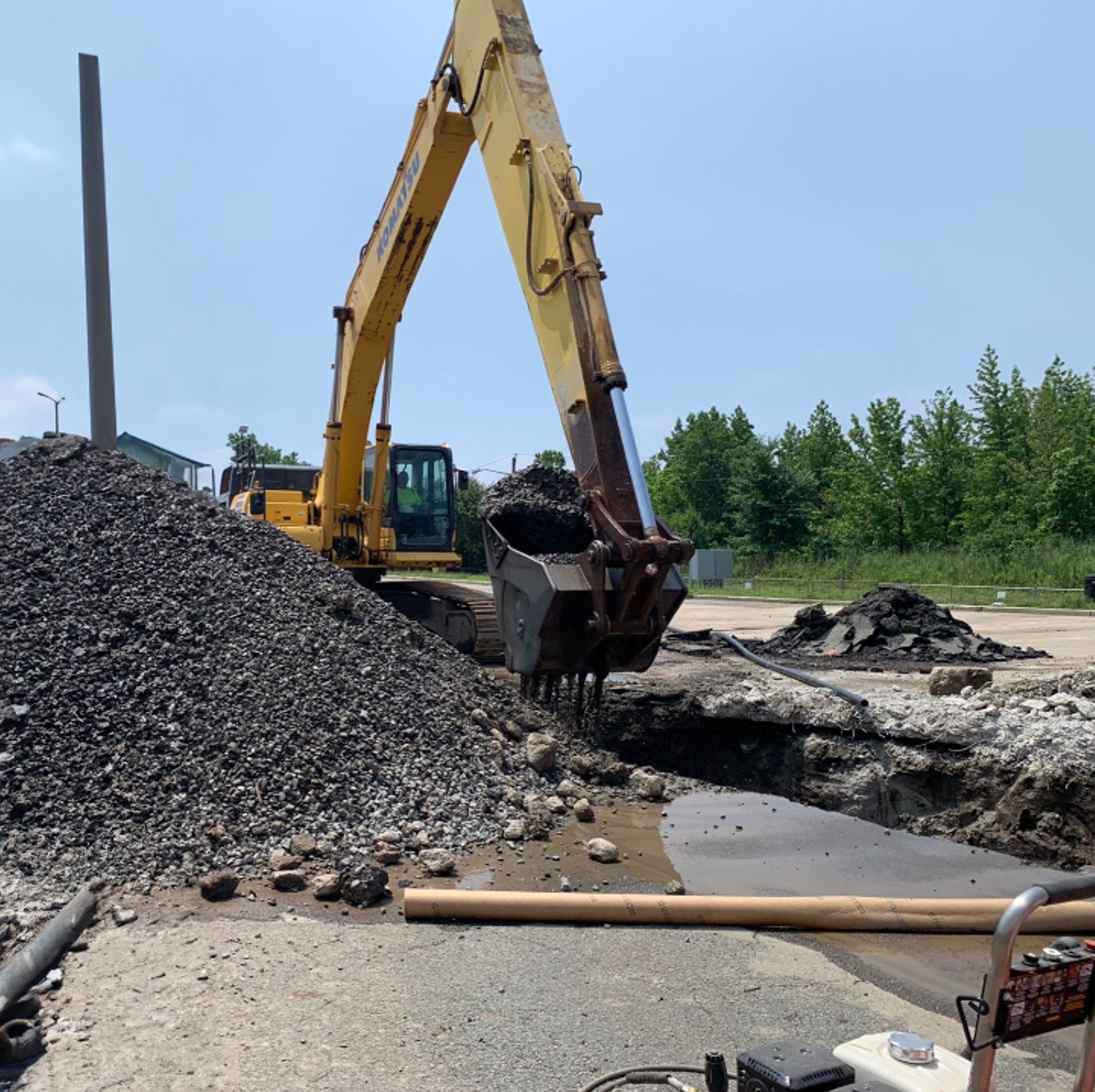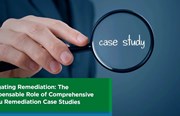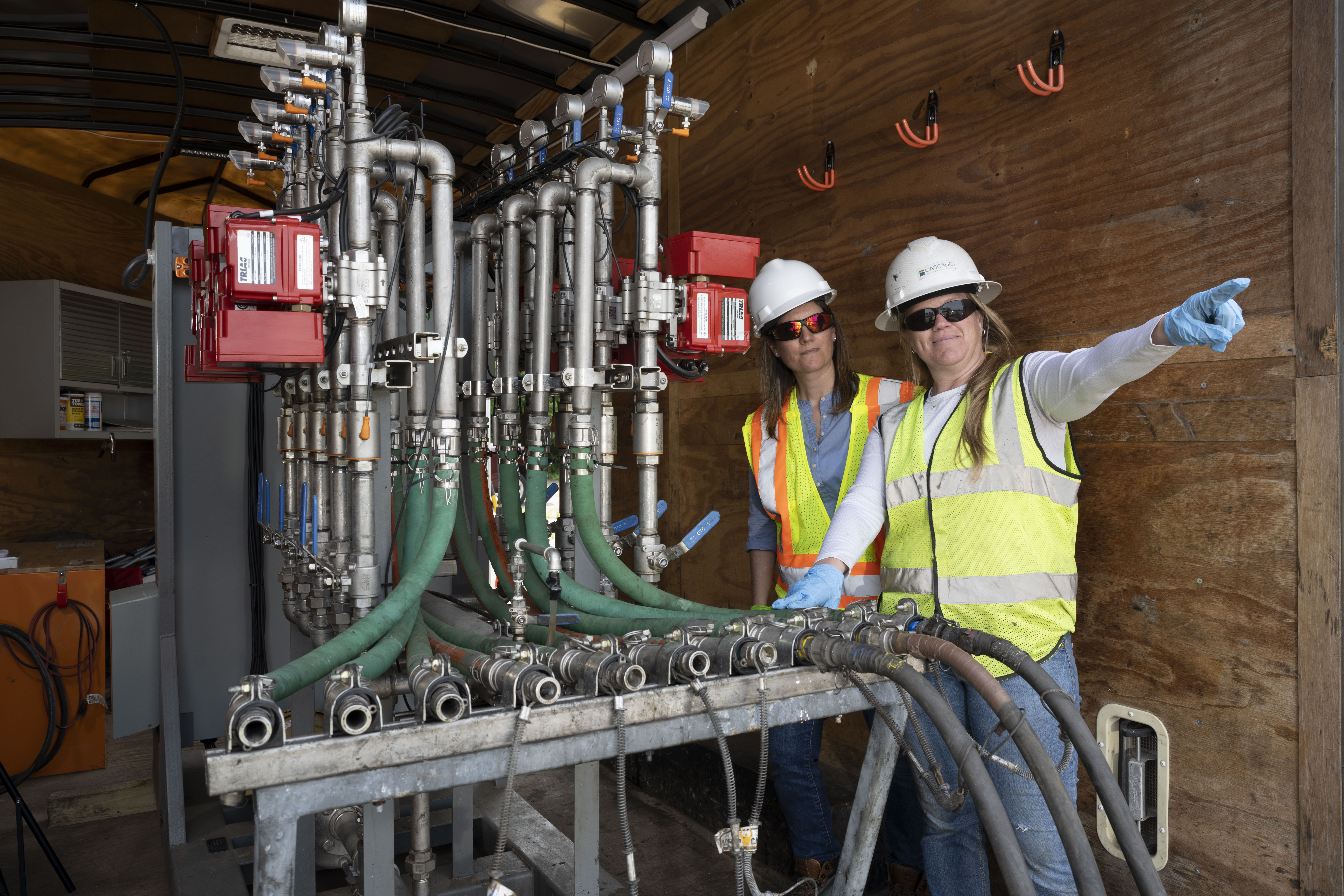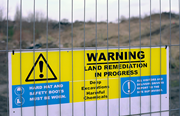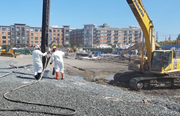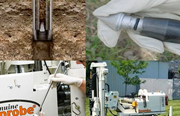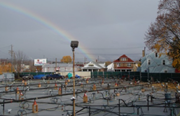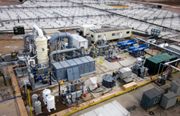In situ chemical reduction (ISCR) can help you meet your contaminant destruction goals and, in many cases, with fewer events in a way that bioremediation and in situ chemical oxidation (ISCO) can’t achieve.
What is ISCR?
ISCR uses both biological and abiotic reducing agents like zero valent iron (ZVI) and other combined formulations to change contaminants into less toxic or less mobile forms. It’s conducted in place without excavating soil or pumping groundwater above the surface. While able to clean up several contaminants, ISCR is most often used to remediate chlorinated solvents.
How does ISCR work?
Hydrolysis and the beta elimination pathway are the primary chemical reactions when using ZVI to reduce chlorinated solvents. A small percentage of the reaction will also follow the biotic dechlorination pathway for degradation to ethene.
What are common reasons for using ISCR?
ISCR can be used for source reduction, such as DNAPL remediation zones, and in reactive treatment zones in the plume or site boundary.
It’s generally applied in fine-grained soils where liquids cannot be effectively distributed under high pressure and, more recently, in transmissive zones with < 5 um ISCR amendments. ISCR can be combined with bio substrates and bioaugmentation (ISCR-enhanced bioremediation) for a more aggressive abiotic/biotic treatment that can minimize the production of PCE and TCE daughter products, CIS 1,2 DCE or VC.
How are reducing agents brought into contact with contaminants?
Two ways Cascade brings reducing agents into contact with contaminated soil and groundwater are direct low-pressure injection and higher-pressure hydraulic or pneumatic fracturing.
Direct injection of Colloidal iZVITM (< 5um) dilutes the injectable ZVI with water and pumps it through injection wells or DPT injection tools.

Fracturing with SourceKillTM or micro-scale ZVI (> 5um) involves exceeding the fracture pressure of adjacent soils to create or enhance new flow paths. These fractures can be created with nitrogen, water or the ISCR amendment itself. Once fracturing is complete, which usually takes a few seconds, injection of the solid slurry proceeds with pumps, like progressive cavity, piston or positive displacement pumps.
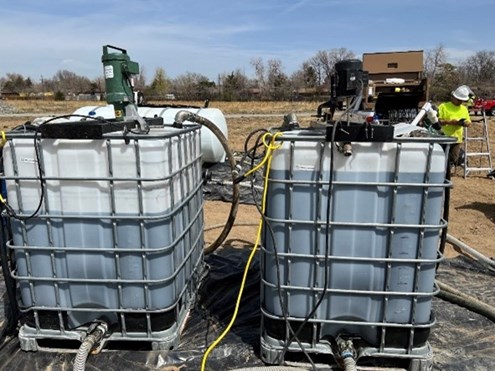
What are the benefits of ISCR?
ISCR is a highly persistent chemistry, which means it will be around and ready to treat contaminants as they desorb from the soil, which has been the issue with less persistent chemistries at sites with contaminant mass sorbed to soil.
What are the best practices for ISCR site remediation?
Performing ISCR reagent injection correctly involves the following steps:
- Develop an understanding of mass distribution and the soil, groundwater and DNAPL phases, typically identified with high-resolution design optimization tools like the MiHPT.
- For transmissive zones, target injectable iron in high K zones and at pressures and flows to prevent fracturing or excessive mounding.
- Inject at greater than five feet below the ground surface to minimize daylighting or short-circuiting and enhance contact.
- For fine-grained zones, post fracturing, inject at high injection rates to maximize lateral distribution.
- Utilize multiple lines of evidence to verify distribution through pressure at monitoring wells, electric conductivity (EC) logging, magnetometer measurements of soil cores and groundwater monitoring parameters. Those parameters include ORP, Methane, Ferrous Iron, pH and contaminants.
- Stagger locations and vertical intervals and overlap areas of influence.
- Don’t skip intervals or reallocate amendments.
ISCR is an advanced technique for reducing contaminants that can provide long-lasting results at your site. When you understand what ISCR is, how it works and the frequent reasons for using it, you’ll be better prepared for effective remediation.
Learn more about how ISCR works in a real-world application in this DNAPL remediation project highlight.
I also invite you to join me for next week's webinar, More Money, More Delays: How to Limit Cost Overruns and Remediation Problems With New Technology and Approaches. I'll be talking about how we can more effectively address problems like emerging contaminants, solvent and petroleum rebound, and unintended chemistry mobility.
Categories
- Site Remediation
- Drilling
- Careers
- Cascade Chemistries
- Safety
- Site Characterization
- Thermal
- Rotary
- Sustainability
- In Situ Stabilizaton
- High Resolution Site Characterization
- Injection
- Sonic Drilling
- Automated injection
- corporate sustainability
- case studies
- in situ thermal remediation
- Cascade Drilling
- Over Water Drilling
- In Situ Stabilization (ISS)
- ISS
- Environmental Remediation
